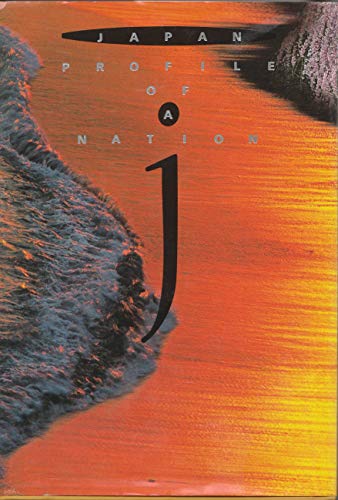Japan: Profile of a Nation (English and Japanese Edition) - Softcover

"synopsis" may belong to another edition of this title.
Japanese cooking (Nihon ryori)
There are three fundamental types of traditional full-course Japanese cuisine: honzen ryori, an assembly of dishes served on legged trays at formal banquets; chakaiseki ryori, a series of dishes sometimes served before the TEA CEREMONY; and KAISEKI RYORI, a series of dishes for parties, often served at restaurants specializing in Japanese cuisine (ryotei). Other types are osechi ryori, dishes traditionally served on important holidays such as NEW YEAR'S, and shojin ryori, Buddhist vegetarian dishes.
Ingredients
The main ingredients in Japanese cooking are seafood, vegetables, and rice. The consumption of raw seafood has long been a distinguishing feature of native cuisine, and its preparation requires that fish be very fresh and that it be skillfully cut with a very sharp knife (hocho). Because of the abundance of foods supplied by the seas surrounding Japan and the influence of Buddhism, which militated against the killing of animals, Japanese cooking formerly made little use of the flesh of animals and fowl, dairy products, and oils and fat. Principal seasonings are fermented products of soybeans, such as SOY SAUCE and MISO (soybean paste) or of RICE, such as SAKE, vinegar, and mirin (sweet sake). To preserve the natural flavors of ingredients, strong spices are avoided in favor of milder herbs and spices, such as kinome (aromatic sprigs of the tree known as sansho), yuzu (citron), wasabi (Japanese horseradish), ginger, myoga (a plant of the same genus as ginger), and dried and ground sansho seeds.
Tableware
In preparing foods for serving one arranges them in a manner that harmonizes colors and textures, on plates or in bowls that accord with the season of the year; for example, glass and bamboo are considered appropriate for summer. Dishes of contrasting shapes, sizes, and patterns are used during the course of a meal to achieve an aesthetic balance between food and receptacle that pleases the eye and stimulates the appetite.
"About this title" may belong to another edition of this title.
- PublisherKodansha USA Inc
- Publication date1999
- ISBN 10 4770023847
- ISBN 13 9784770023841
- BindingPaperback
- Number of pages926
- Rating
Buy New
Learn more about this copy
Shipping:
FREE
Within U.S.A.
Top Search Results from the AbeBooks Marketplace
Japan: Profile of a Nation (English and Japanese Edition)
Book Description Paperback. Condition: New. Seller Inventory # Abebooks472651

